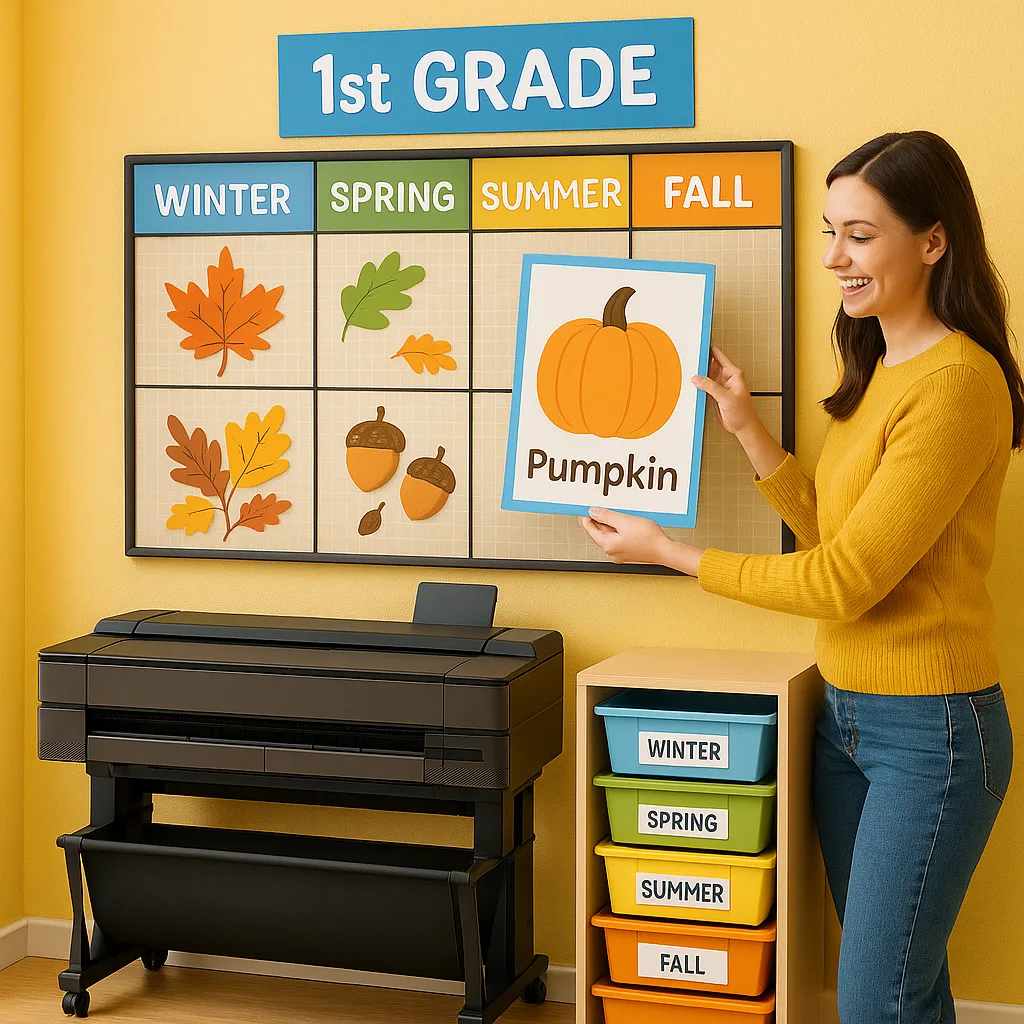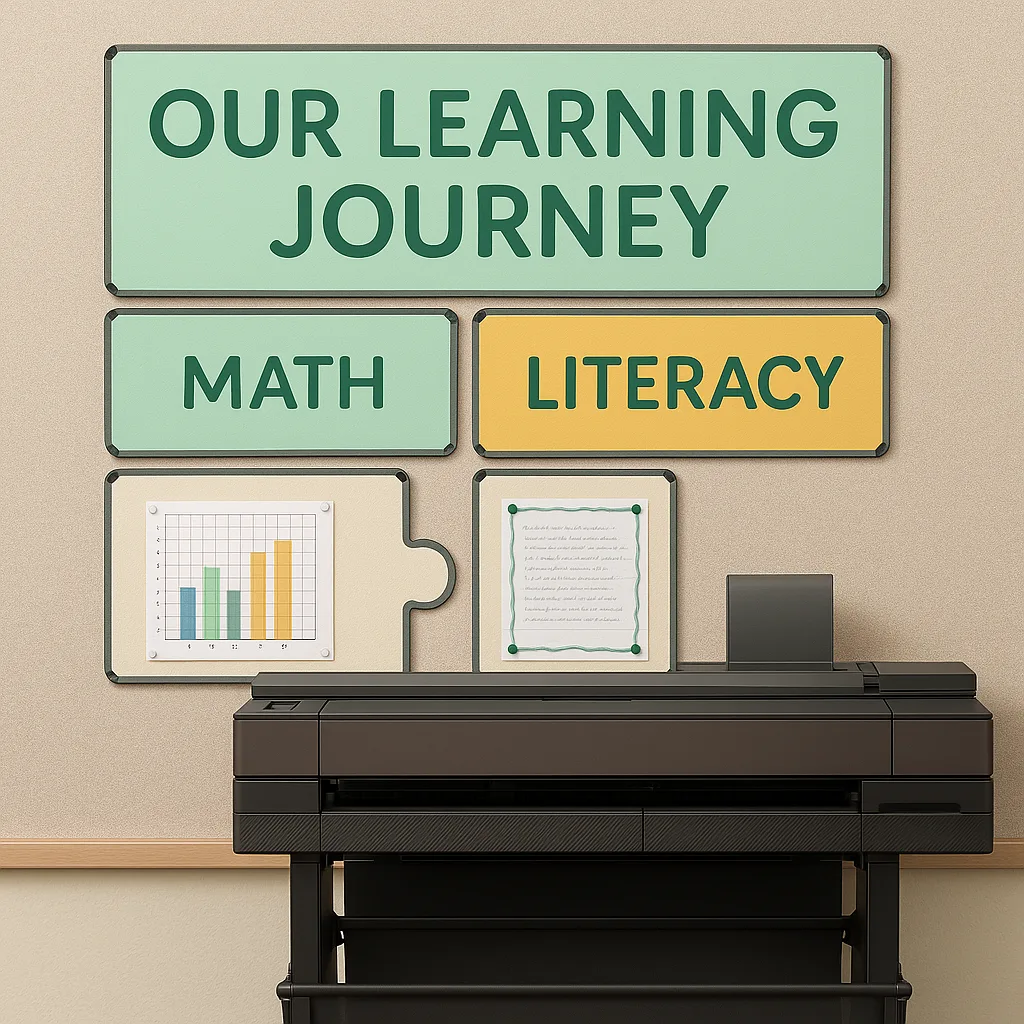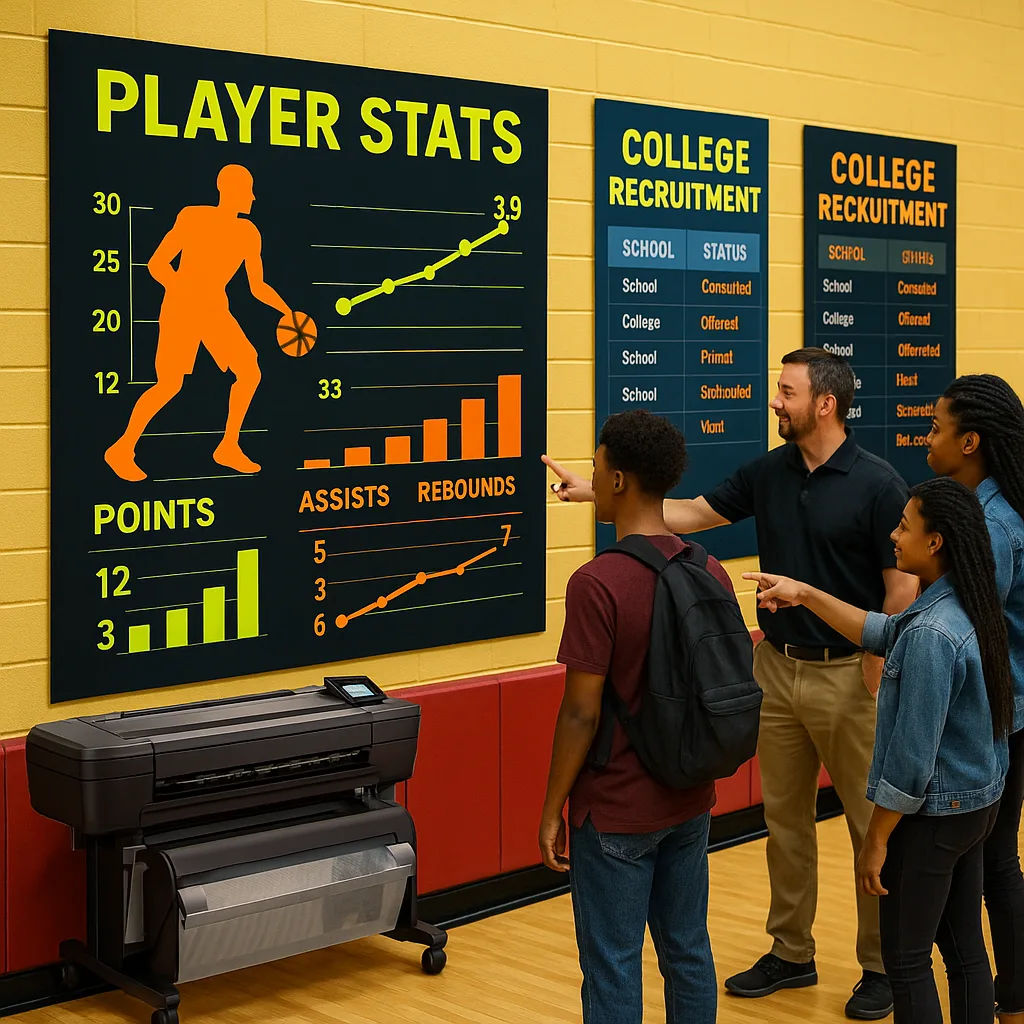
Transform Your Classroom Displays with Smart Design Systems
Okay, real talk—last Tuesday, I spent my entire lunch break (and half of recess) trying to switch out my October bulletin board for November. By the time I finished, my fingers were sore from stapling, and I had exactly three minutes to inhale my sandwich. Sound familiar? That’s when I discovered how poster machines for bulletin boards could completely revolutionize my display game.
Research from the National Education Association shows that well-designed classroom displays can boost student engagement by up to 23%. Yet most of us spend hours creating displays that last just a few weeks. There’s got to be a better way, right?

Why Poster Machines for Bulletin Boards Save Teacher Sanity
Here’s what changed everything for me: Instead of creating entirely new displays each month, I started using our school’s Education Express 24″ Poster Maker Package A to create modular components. Think of it like having interchangeable Lego blocks for your walls!
The magic happens when you design reusable base elements that work year-round. For instance, I created a simple grid system with neutral borders that stays up all year. Then, I just swap out the center pieces using fresh prints from our poster printer machine for schools. No more wrestling with fadeless paper at 7 PM on a Sunday!
Studies from the Association for Supervision and Curriculum Development indicate that teachers spend an average of 6-8 hours monthly on bulletin board changes. With a modular system, I’ve cut that time to under 2 hours. That’s 4-6 extra hours each month for lesson planning, self-care, or actually leaving school before dark!
Essential Components for Your Quick-Change System
Let me break down the basic building blocks that make this system work. First, you’ll need durable base layers—these are your year-round foundations. I print mine on Coated Poster Paper because it’s sturdy enough to last all year but affordable enough to replace if needed.
Next come your seasonal overlays. These are where poster machines really shine! I create sets for each season and major holiday, printing them all at once during summer prep. The key is designing them with consistent dimensions so they fit perfectly into your base system every time.
Finally, don’t forget about subject-specific modules. Whether it’s math facts, sight words, or science vocabulary, having pre-printed sets ready to rotate keeps your displays fresh without starting from scratch. Our Lifetime Design Service has been amazing for this—I just send them my content, and they create professional-looking modules that fit my system perfectly!
Creating Your Modular Display Library
Building a comprehensive display library might seem overwhelming, but remember—this is an investment that pays off all year long. Start small with one bulletin board and expand as you see the time savings pile up.
Seasonal Templates That Work Hard
My seasonal collection includes four base designs that I modify slightly for different holidays. For fall, I have a warm leaf border that works for September through November. I just swap the center content from “Welcome Back” to “Harvest Time” to “Thankful Hearts.” Using our poster printer machine for schools, I can print these updates in under 10 minutes!
Winter gets its own versatile snowflake border that transitions from December holidays through February’s President’s Day. Spring flowers bloom from March through May, covering everything from Women’s History Month to end-of-year celebrations. This approach means I’m designing smart, not hard.
The Journal of Educational Psychology found that consistent visual themes help younger students feel more secure and focused. By keeping familiar elements while updating content, we’re actually supporting their emotional well-being too!
Subject-Specific Modules for Instant Updates
Math stations get weekly updates with new problem sets, but the headers and organization stay constant. I print number lines, hundreds charts, and strategy posters in batches, laminating them with our PSE Cool 25″ Cold Laminator for durability. These become grab-and-go resources I can swap based on our current unit.
For literacy, I’ve created word family houses, phonics rule posters, and sight word displays that rotate monthly. The beauty of using poster machines is the print quality—crisp, clear text that’s easy for little eyes to read from across the room. No more hand-lettering that gets wobbly by the third word!
Science and social studies modules follow our curriculum map. I print unit headers and key vocabulary at the start of each semester, storing them in labeled portfolios. When it’s time to switch units, I just pull the next set and update in minutes. This system has literally given me back my Sunday afternoons!
Smart Storage Solutions for Busy Classrooms
Organization is half the battle with any modular system. After trying several methods, I’ve found that large art portfolios work best for storing printed components. I label each by season, subject, or theme, keeping them in a closet shelf where they’re easy to access but out of the way.
For smaller pieces like student name tags or calendar numbers, I use clear shoe organizers hung inside a cabinet door. Each pocket holds a different set, making it simple to grab what I need. The visual organization means I can send a parent volunteer or student teacher to fetch materials without lengthy explanations.
Pro tip: Take photos of each completed display before you take it down. I keep these in a digital folder organized by month. Next year, I can quickly reference what worked and recreate successful layouts without reinventing the wheel. It’s like having a visual lesson plan for my classroom walls!
Making Poster Machines for Bulletin Boards Work for You
The real game-changer has been shifting my mindset from “one-and-done” displays to thinking in systems. When I create something new, I always ask myself: “How can I make this reusable?” Sometimes it’s as simple as leaving dates blank so I can use the same poster next year.
I’ve also started collaborating with my grade-level team. We each design different modules and share the files. Using our school’s poster printer machine for schools, we can each print copies of everyone’s designs. It’s like having four times the resources with a quarter of the work!
The National Council of Teachers of Mathematics emphasizes that visual displays should enhance, not distract from learning. By having a organized system, I can be more intentional about what goes on my walls and when. Every display serves a clear purpose rather than just filling space.
Time-Saving Tips from the Trenches
After a full year of using this system, I’ve learned some tricks that make it even smoother. First, batch your printing! I dedicate one afternoon in August to printing all my seasonal headers and borders. Yes, it uses more materials upfront, but the time savings throughout the year are incredible.
Second, think beyond traditional bulletin boards. I use the same modular approach for door decorations, hallway displays, and even parent communication boards. Once you have the templates created, scaling them up or down with poster machines is simple.
Third, involve your students! My first-graders love helping choose which math strategy poster goes up each week. It gives them ownership of our classroom environment and takes another task off my plate. Win-win!
Budget-Friendly Implementation Strategies
I know what you’re thinking—”This sounds expensive!” But here’s the truth: investing in a good system actually saves money long-term. No more buying new border trim every month or purchasing pre-made displays that don’t quite fit your teaching style.
Our school used Title I funds to purchase our Education Studio 24″ Poster Maker Package A+, and it’s been a game-changer for our entire team. The cost per print is incredibly reasonable—about $1.30 for a full-size poster that would cost $15-20 at a teacher store.
If your school doesn’t have a poster printer machine for schools yet, start small. Create digital templates that you can print at a copy shop initially. As you see the time savings add up, you’ll have concrete data to share when requesting funding. Check out this demo video to see exactly how these systems work!
Your Quick-Start Action Plan
Ready to reclaim your weekends? Here’s your three-step starter plan:
1. Audit your current displays: Which elements could become reusable templates? Start with one bulletin board as your pilot project.
2. Design your base system: Create neutral borders and organizational structures that work year-round. If you need help, remember that professional design assistance is available!
3. Build your library gradually: Don’t try to create everything at once. Add new modules as you need them throughout the year. By next August, you’ll have a full collection ready to go!
The bottom line? Using poster machines for bulletin boards isn’t just about pretty classrooms—it’s about working smarter, not harder. When we spend less time on decorating, we have more energy for what really matters: teaching our amazing kiddos!
What’s your biggest bulletin board challenge? I’d love to hear how you’re making displays work in your classroom. Because at the end of the day, we’re all in this together, trying to create spaces where little learners can thrive. And maybe, just maybe, we can eat our lunch sitting down while we do it! 🌟
Ready to transform your classroom displays? Call Poster Studio Express at 866-788-7900 to learn how poster machines can save you time and create stunning bulletin boards all year long!







